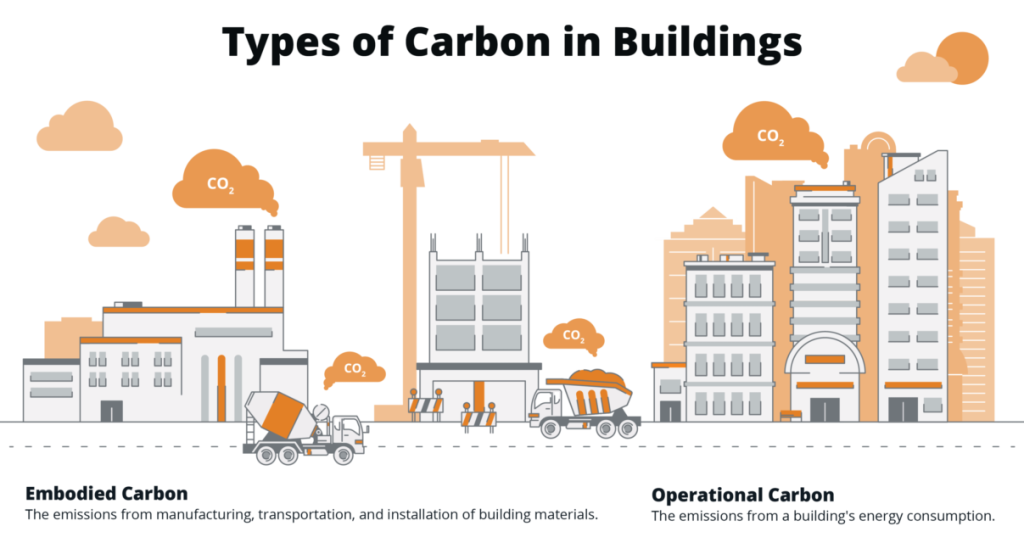Embodied Energy- Why it is important to get serious about it?

In India, 80% of the energy needs (electricity) are met by the thermal power plant, and for every one unit (1kWh) of energy consumed, there is 0.6 kg of CO2 released into the atmosphere. Energy (Electricity) is an essential part of modern life and hence CO2 emission becomes the norm.
Annual per-person energy consumption is 3000 units and CO2 emission is 1900 Kg, imagine how many trees one has to plant to absorb all the CO2 emissions? (A large banyan tree can absorb only 25 Kg of CO2 per year).
The building generates nearly 40% of CO2 emissions. Of those total emissions, building operations are responsible for 28% annually, while building materials and construction (embodied carbon or embodied energy) are responsible for an additional 11% annually.
Embodied energy: Embodied energy (EE) of building materials constitutes the total energy consumed during the manufacture of building materials, including that raw material extraction and associated transportation.
Embodied energy assessment of building materials reveals the extent of energy consumed and associated GHG emissions in their manufacture.
Embodied energy is expressed in units of Mega Joules (MJ) or Giga Joules (GJ) per unit of weight (Kilogram or tonne) or area (square meter).
Just three materials – concrete, steel, and aluminum – are responsible for 23%
of total global emissions (most of this is used in the built environment)
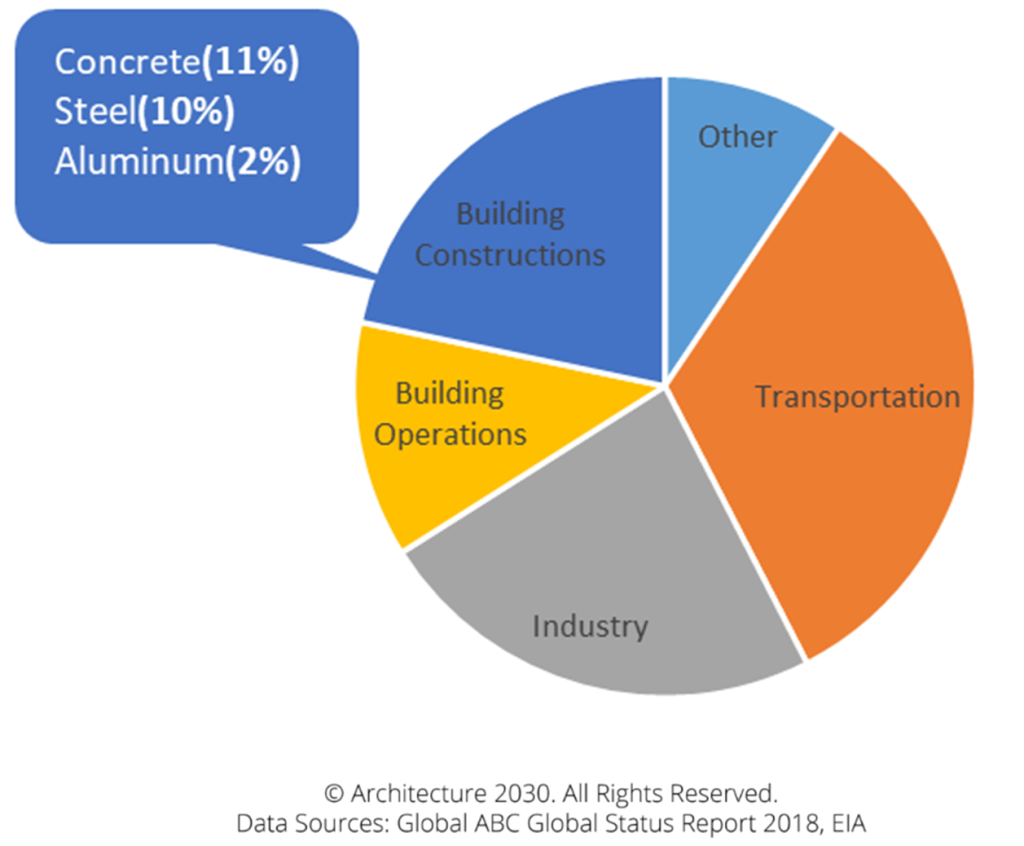
In this modern world, it is difficult to imagine a building without concrete, steel, and aluminum.
As global emissions are peaking an all-time high, it is imperative either to look at alternative building materials or renewable energy-based production.

Is burnt brick better than concrete block? How do we know? What are the ways to reduce embodied energy? How do we measure?
Many universities and research institutes (Bath, IISC, and many more) have worked on establishing the embodied energy of the different building materials. The graph shows embodied energy of the typical building per sqmt of built area, steel and ceramic have the highest impact on CO2 emissions
Is Burnt Brick better than Concrete Block?
The embodied energy of burnt brick is 1615 MJ/m2 whereas the embodied energy of the concrete block is 406 MJ/m2.Believe in God, everybody else must bring the data to the table.
Reducing Embodied Energy in the Building:
When sustainability is the driving force in the creation of buildings, Builders and Architects need to be mindful of the choice of building materials and their uses.
Use Locally sourced materials: The use of locally sourced and indigenous materials is climate-friendly and reduces embodied energy.
Reduce the quantity of materials: Reduce the quantity of materials by designing the building using alternatives like using filler slabs, reducing column spacing, etc. while designing the structures.
Use materials that have lower embodied energy: Substitute high-embodied energy materials with the materials of lower embodied energy, for example, use cement with PFA or GGBS mix instead of Cement.
Select more efficient construction methods such as prefabricated structures, Planks, and Joists, Post-tension concrete slabs, etc.
Design for future use, adaptability, and flexibility – designed to make buildings suited to different uses will increase their lifespan and reduce the need to use new construction material.
Alternative Building Materials and their Embodied Energy:
Making informed choices on the selection of building materials is much easier than ever before. The EDGE App helps determine which building elements have the highest embodied energy and where there are alternatives to reduce it.
While designing a green building, finding a realistic way to reduce the embodied energy of the roof, floor, and wall structure is critical.
Below is a list of embodied energy values for floor slab, Wall, and Flooring elements which indicates that there are plenty of lower impact options available compared to typical building materials like brick, Ceramic Tile, RCC.
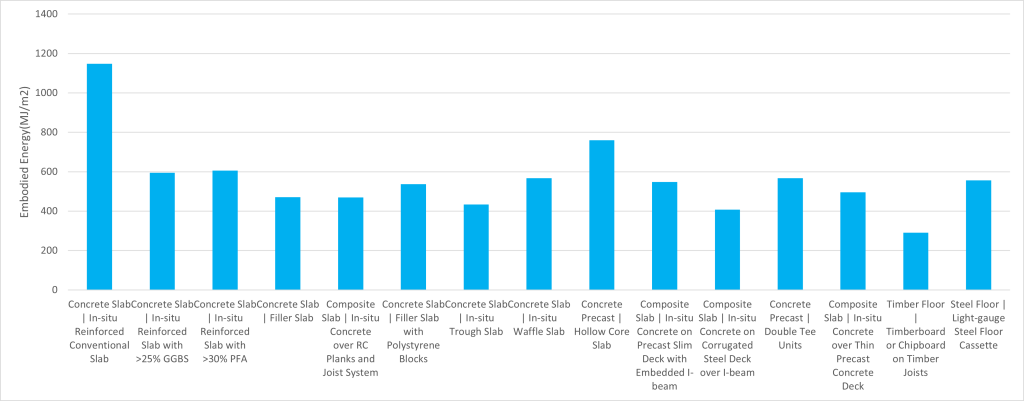
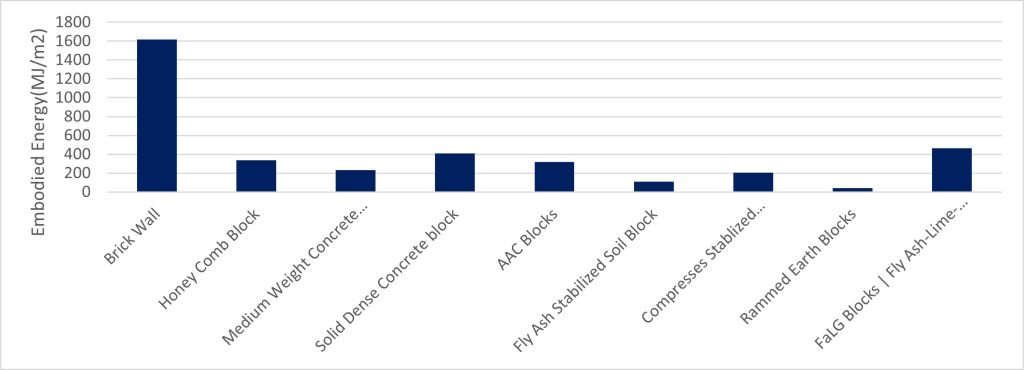
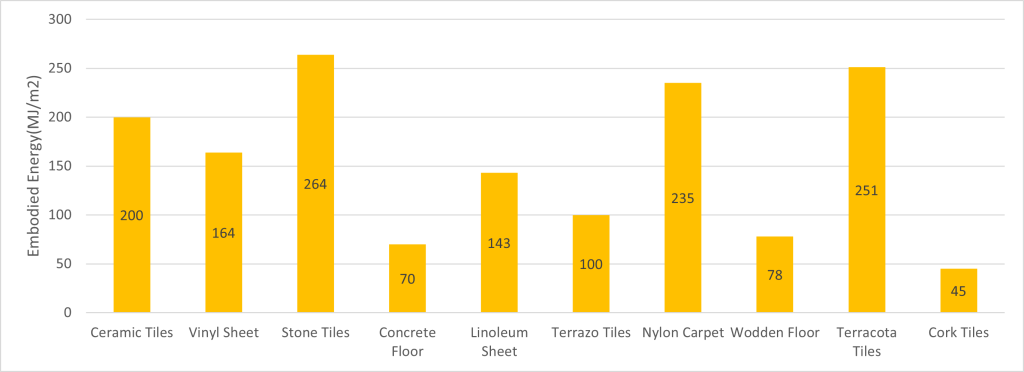
Conclusion:
Unlike operational carbon emissions, which can be reduced over time with having energy-efficiency measures and the use of renewable energy, embodied carbon emissions are sealed in the buildings once they are built. One cannot reduce impact once it is built and hence careful consideration of building materials at the design stage is the paramount importance.
The usage of low embodied energy materials depends on the place where the project is located and the availability of local materials. Paying attention at the early design stage and making informed design and specification choices can reduce the embodied energy of the building to a greater extent..

